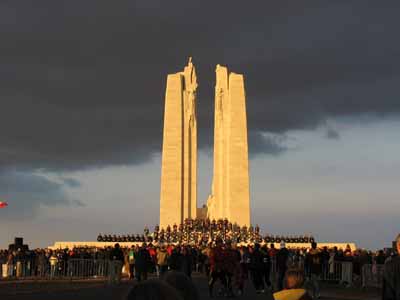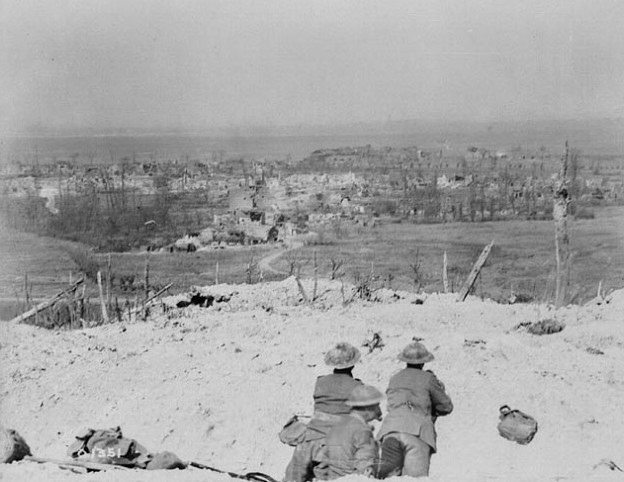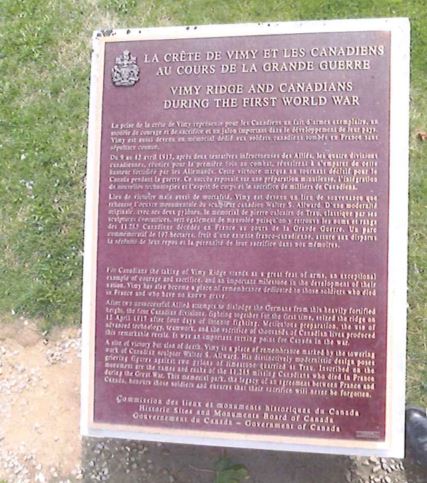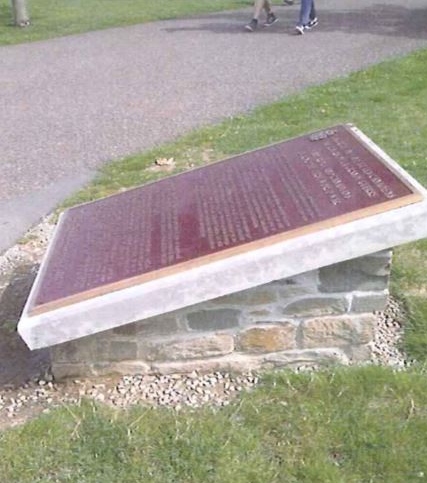Vimy Ridge National Historic Site
Vimy Ridge was designated a national historic site in 1997.
Commemorative plaque: route départementale 55, Chemin des Canadiens, Givenchy-en-Gohelle, FranceFootnote 1
For Canadians the taking of Vimy Ridge stands as a great feat of arms, an exceptional example of courage and sacrifice, and an important milestone in the development of their nation. Vimy has also become a place of remembrance dedicated to those soldiers who died in France and who have no known grave. After two unsuccessful Allied attempts to dislodge the Germans from this heavily fortified height, the four Canadian divisions, fighting together for the first time, seized the ridge on 12 April 1917 after four days of intense fighting. Meticulous preparation, the use of advanced technology, teamwork, and the sacrifice of thousands of Canadian lives produced this remarkable result. It was an important turning point for Canada in the war. A site of victory but also of death, Vimy is a place of remembrance marked by the towering work of Canadian sculptor Walter S. Allward. His distinctively modernistic design poses grieving figures against two pylons of limestone quarried at Trau. Inscribed on the monument are the names and ranks of the 11,285 missing Canadians who died in France during the Great War. This memorial park, the legacy of an agreement between France and Canada, honours those soldiers and ensures that their sacrifice will never be forgotten.



© W.I. Castle / Canada. Dept. of National Defence / Library and Archives Canada / PA-001446
Description of historic place
The Vimy Ridge National Historic Site is situated on a height of land in northern France, approximately 14 kilometers north of the city of Arras. The site consists of several components, including the monument, two Commonwealth War Graves cemeteries, reconstructed trenches, the Grange tunnel, and a house. These features are all pulled together by a simple landscape plan of a pine tree forest, allées, maple trees, and connecting paths and roads. The monument is the dominant feature of the landscape, visible from miles around. Official recognition is defined by the 248-acre (117 ha) site which was granted by France to Canada for use in perpetuity as a memorial to the soldiers of the First World War.
Heritage value
Vimy Ridge was designated a national historic site for the following reasons:
- Canada's accomplishment, contribution and sacrifice in the First World War are themselves of major national significance;
- the War itself was a landmark in the development of Canada as a nation;
- Vimy is the site of a great Canadian victory in the First World War;
- it memorializes Canadians lost in the conflict who have no known grave, and is a place of remembrance marked by the towering work of Canadian sculptor Walter S. Allward.


Vimy Ridge is Canada’s principal memorial in Europe to the country’s contribution and sacrifice in the First World War. Vimy Ridge is the site of a great Canadian military victory in the First World War. The landscape is marked by traces of the battle and vestiges of former trenches, saps and tunnels of the Canadian and German forces. The central feature of the Vimy site is the towering stone monument commissioned by the Canadian government to honour its soldiers who served in the First World War. The monument was erected between 1925 and 1936. On it are carved the names of the 11,285 missing Canadian soldiers who died in France during the conflict. The site was granted to Canada by France in 1922 in perpetuity for use as a memorial park.
Sources: Historic Sites and Monuments Board of Canada, Minutes, November 1996; Commemorative Integrity Statement, October 2005.
The National Program of Historical Commemoration relies on the participation of Canadians in the identification of places, events and persons of national historic significance. Any member of the public can nominate a topic for consideration by the Historic Sites and Monuments Board of Canada.
- Date modified :